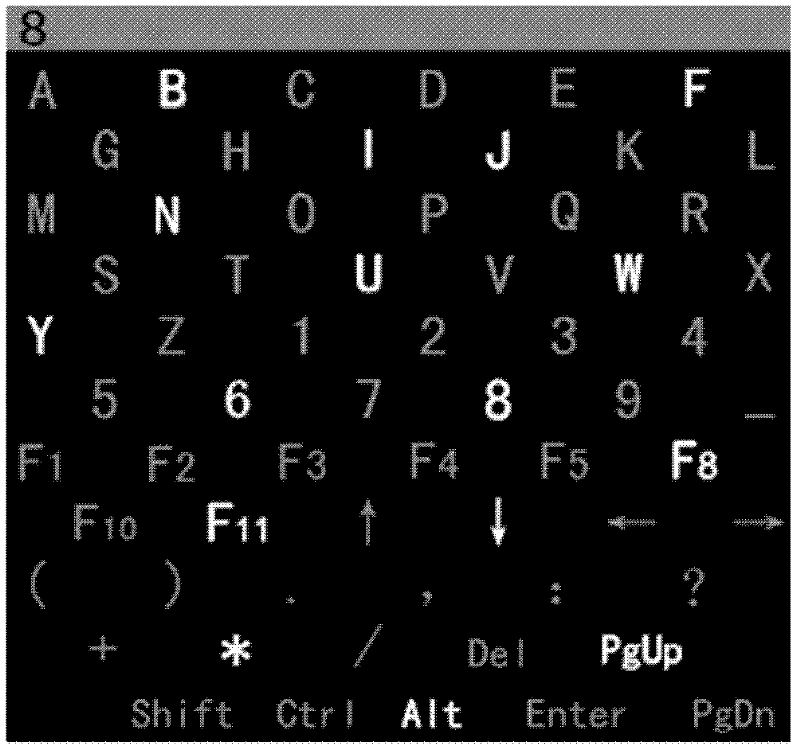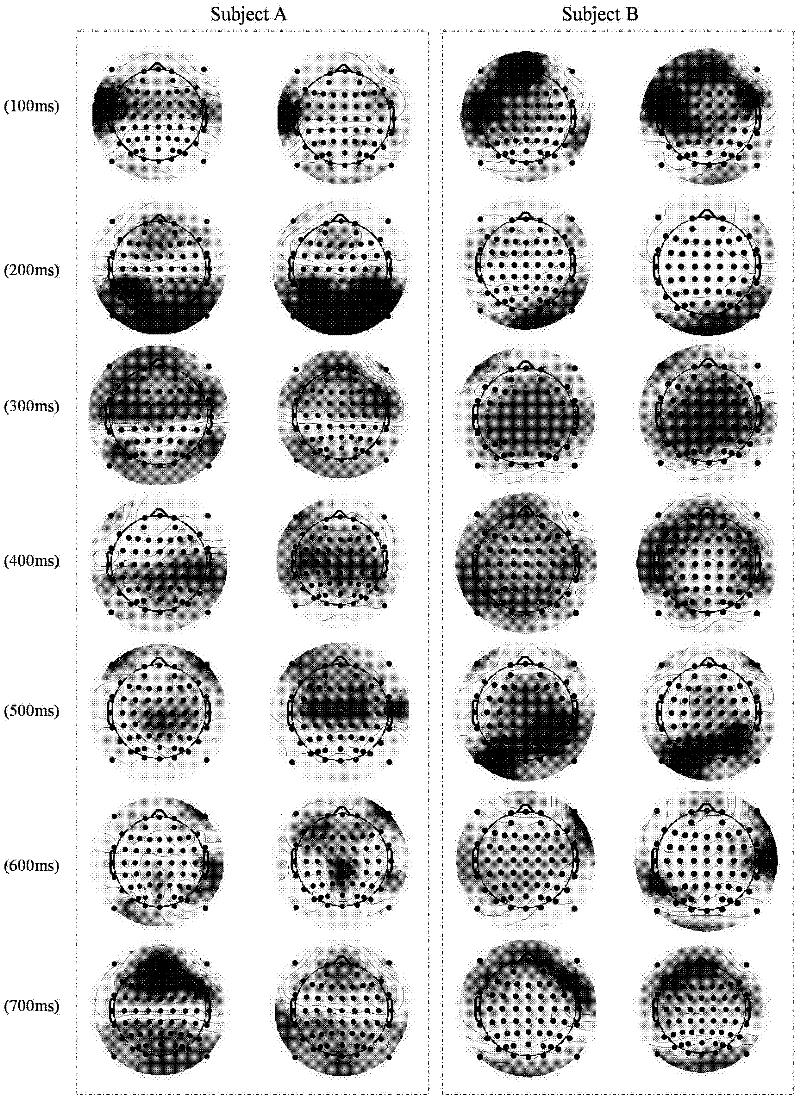Identifying method based on visual evoked P3 potential
An identity recognition and visual induction technology, applied in human identification, character and pattern recognition, medical science, etc., can solve the problems of complex recognition device and not yet in the practical stage.
- Summary
- Abstract
- Description
- Claims
- Application Information
AI Technical Summary
Problems solved by technology
Method used
Image
Examples
Embodiment Construction
[0037] The present invention proposes a method of using the P3 component in the EEG event-related potential (ERP) to realize identity recognition. The key technologies involved include: induction and collection of P3 EEG signals, signal processing, feature extraction, brain Electrical individual difference analysis and classification identification, etc. The technical process is as follows: firstly, the collected raw EEG signals are preprocessed, and then the P3 component to be studied is separated from the EEG mixed with background noise, and its individual differences are analyzed. (SVM) performs classification training and testing on P3 waveform features to realize identity recognition. Compared with the traditional biometric identification technology, the idea of identification based on EEG is novel and has unique and significant advantages. It is a breakthrough in traditional EEG research and provides a new way to explore more diverse and effective identification method...
PUM
 Login to View More
Login to View More Abstract
Description
Claims
Application Information
 Login to View More
Login to View More - R&D
- Intellectual Property
- Life Sciences
- Materials
- Tech Scout
- Unparalleled Data Quality
- Higher Quality Content
- 60% Fewer Hallucinations
Browse by: Latest US Patents, China's latest patents, Technical Efficacy Thesaurus, Application Domain, Technology Topic, Popular Technical Reports.
© 2025 PatSnap. All rights reserved.Legal|Privacy policy|Modern Slavery Act Transparency Statement|Sitemap|About US| Contact US: help@patsnap.com



